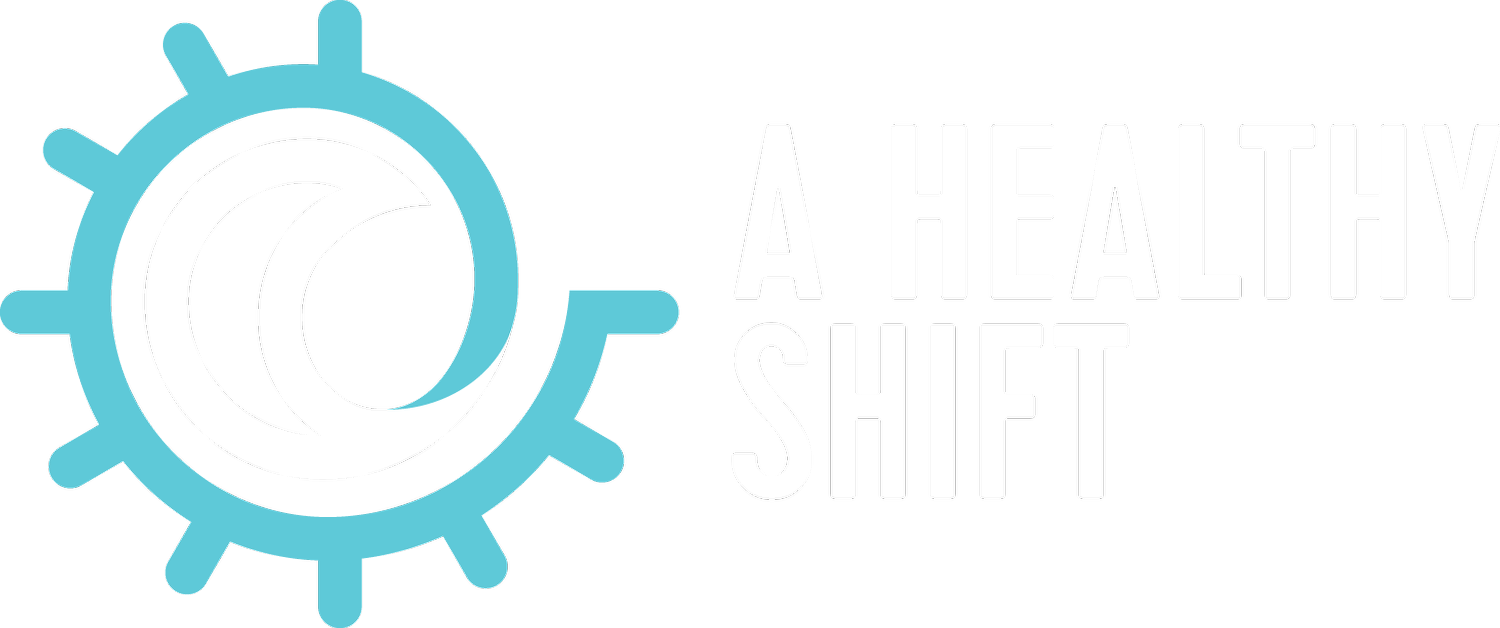Help! I Can’t Stop These Cravings: How to Manage Cravings on Shift Work
Help! I Can’t Stop These Cravings
Does this sound familiar? You’re halfway through a long shift, maybe it's an afternoon stretch or late into the night, and all you can think about is devouring that sugary snack or fast food. Cravings can be one of the biggest challenges for shift workers. They hit hard, seemingly out of nowhere, and resisting them can feel like an impossible task. But why do these cravings happen? And more importantly, what can you do about them?
In this blog, we’ll look into the why behind those cravings, and I’ll give you practical, evidence-based strategies to curb them once and for all. Let’s focus on real solutions like incorporating low glycemic index (GI) foods for steady energy, staying hydrated, and managing your hunger in a way that works for shift work.
Why Do Cravings Happen on Shift Work?
Before we jump into the strategies, we need to understand why you’re experiencing cravings in the first place. Cravings don’t just come from nowhere—they are often a result of physical, mental, and emotional triggers that many shift workers face daily.
1. Circadian Rhythm Disruption
Our bodies are wired to operate on a circadian rhythm, a natural 24-hour cycle that regulates sleep, hunger, and energy levels. For most of us, our circadian rhythm is aligned with daylight. However, as shift workers, this rhythm is constantly disrupted. Your body’s internal clock is out of sync with the natural light-dark cycle, which can throw off your hunger-regulating hormones like ghrelin (which makes you feel hungry) and leptin (which signals when you're full). When these hormones are imbalanced, your body can mistake fatigue or stress for hunger, leading to strong cravings, especially for high-sugar or high-fat foods.
2. Low Energy Levels
After a long shift—or heading into a night shift—your energy reserves are often running low. Naturally, your body starts looking for a quick fix, and that usually comes in the form of simple carbohydrates or sugary snacks. These foods give you a fast energy boost but come with a crash that leaves you feeling even more drained, sparking the cycle of cravings all over again.
3. Stress and Fatigue
Chronic stress and fatigue are common in shift work, and they play a big role in cravings. When you’re stressed, your body releases cortisol, which increases your appetite and encourages cravings for ‘comfort foods’—think sweets, chips, and fast food. Fatigue also makes it harder to resist temptations because your brain’s decision-making abilities are compromised when you’re tired.
How to Curb Cravings: Practical Strategies for Shift Workers
Now that you know why cravings occur, let’s talk about what you can do to manage them. The key here is to stabilise your blood sugar levels throughout your shift, giving your body a steady release of energy without the spikes and crashes that lead to cravings. One of the best ways to achieve this is by incorporating low glycemic index (GI) foods into your meals and snacks.
1. Choose Low GI Foods for Steady Energy
Low GI foods are those that release glucose slowly into your bloodstream, providing sustained energy over a longer period. This is essential during afternoon and night shifts when your energy levels are naturally lower, and your body starts craving quick-fix snacks. By focusing on low GI foods, you can prevent those sharp blood sugar spikes and crashes that lead to cravings.
Here are some examples of great low GI foods to include in your shift meals:
Whole grains like oats, quinoa, and barley
Legumes such as lentils, chickpeas, and black beans
Vegetables like sweet potatoes, broccoli, and spinach
Fruits with a low GI, such as apples, pears, and berries
Lean proteins like eggs, chicken, and fish
Why does this work?
When you consume low GI foods, your blood sugar stays more stable, which helps regulate your hunger hormones and keeps your energy levels steady. This makes you less likely to reach for high-sugar or high-fat snacks out of desperation.
Have you got our FREE resource “A Low GI LIfestyle - How to Thrive on Afternoon and Night Shifts” yet?
Tip:
Before your shift, try to have a well-balanced meal that includes low GI foods. This will help fuel you through the first few hours, making you less likely to crave unhealthy snacks.
2. Meal Timing Matters
As a shift worker, you may not always have control over when you can eat, but planning your meals and snacks around your shifts can make a big difference in managing cravings. Try these strategies:
Eat before your night shift starts: Having a nutritious meal before your night shift can help fuel your body and reduce the likelihood of snacking on unhealthy options later.
Plan regular meals and snacks: Going long periods without eating will only make cravings worse. If you wait until you're ravenous, you're more likely to grab the closest, easiest, and often least healthy food option.
Batch cooking: If you find it hard to make time for meals during your shifts, prepare meals in advance. Having a pre-packed, nutritious option at hand reduces the temptation to reach for fast food or vending machine snacks.
3. Stay Hydrated
One of the simplest, but most overlooked strategies for reducing cravings is staying hydrated. Often, when we think we’re hungry, we’re actually just thirsty. Dehydration can trigger similar signals in the brain, making you feel like you need to eat.
Tip:
Make it a habit to keep a water bottle with you during your shift and aim to sip regularly. By staying hydrated, you’ll reduce the chances of mistaking thirst for hunger.
4. Practice Mindful Eating
Mindful eating is about being aware of what you’re eating, how much, and why. It helps you differentiate between true hunger and emotional eating. Here’s how you can practice mindful eating, even during busy shifts:
Pause before eating: Before reaching for a snack, ask yourself if you’re truly hungry or just eating out of habit, boredom, or stress.
Eat slowly: Take your time when eating, even if it’s just a quick snack. This gives your body time to register fullness and helps prevent overeating.
Savour your food: Pay attention to the taste, texture, and satisfaction of what you're eating. You’re more likely to feel satisfied with less food when you eat mindfully.
There is an enormous difference between the signals of “Polite Hunger V Rude Hunger” which I covered in this podcast
[185] - Polite Hunger vs Rude Hunger - Understanding Your Body’s Signals
5. Sleep and Stress Management
Lastly, getting enough sleep and managing stress are critical in keeping cravings at bay. When you’re sleep-deprived, your hunger hormones get out of balance, leading to increased appetite and stronger cravings. Similarly, stress increases cortisol levels, making you more prone to emotional eating.
Tips for managing sleep and stress:
Prioritise sleep on your off days: Try to create a consistent sleep routine, even if your work hours are irregular.
Take short naps if possible during shifts: Naps can help reduce fatigue and improve your focus, making you less likely to reach for sugar-laden snacks for a quick energy boost.
Use stress management techniques: Simple practices like deep breathing, meditation, or taking a short walk can lower your stress levels and reduce cravings.
Conclusion
Cravings can be tough to manage, but with the right strategies, they don’t have to derail your shift work routine. By focusing on low GI foods, staying hydrated, practicing mindful eating, and managing your sleep and stress, you can keep your cravings in check and maintain steady energy throughout your shifts.
Remember, it’s not about perfection—it’s about making small, sustainable changes that help you feel more in control of your cravings. With these tools, you’ll be better equipped to fuel your body in a way that supports your energy, health, and well-being.
About Roger Sutherland
As a coach and advocate for shift workers, my goal is to provide practical, evidence-based strategies that empower individuals to thrive in their roles. By understanding and addressing the challenges of shift work sleep disorder, shift workers can achieve better health outcomes and lead more fulfilling lives both on and off the job.
Note:
I also run Nutrition, Health & Wellbeing Seminars for shift working environments.






